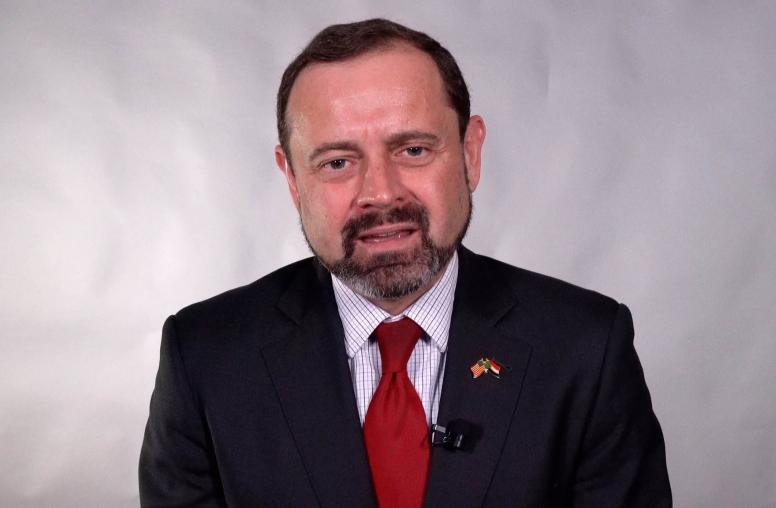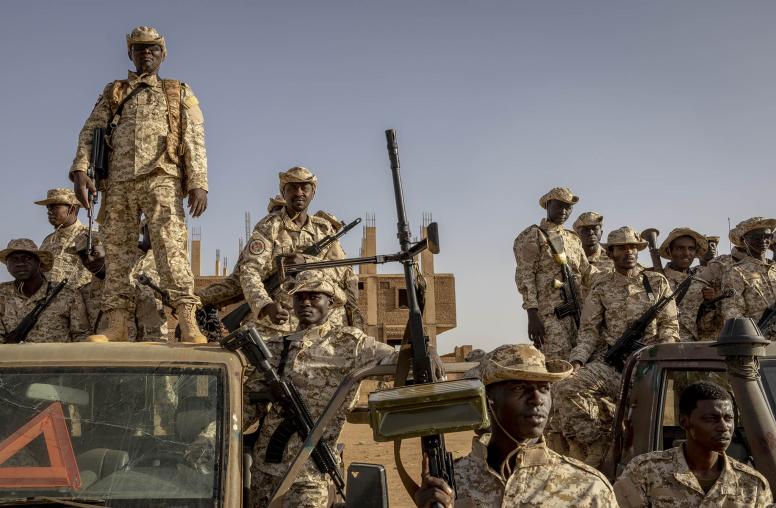After Bashir, A New Dawn in Sudan? (Part 2)
The coming weeks will be critical in shaping the country’s future.
Longtime Sudanese dictator Omar al-Bashir was ousted last Thursday, 30 years after he took power in the same fashion he was overthrown: by a military coup. The military takeover was spurred by months of popular protests over rising food prices, economic mismanagement and demands for a democratic transition. But, protesters have continued to push for change with the military still in power. USIP’s Maria Stephan, Nicholas Zaremba and Elizabeth Murray discuss why this protest movement is different from previous rounds of protests in Sudan and what factors contributed to the movement’s successes so far.
Editor’s note: In Part 1 of this Q&A, USIP’s Susan Stigant and Elizabeth Murray examine what’s going on in Sudan, how future leadership can get the country on the right track, and what the international community can do to help.

How do these protests differ from previous rounds of protests in Sudan?
Unlike the 1964 and 1985 revolutions, whose mass mobilizations lasted just five and 11 days respectively before achieving their objectives, this nationwide, nonviolent movement has lasted four months, despite harsh crackdowns against the demonstrators by the Bashir regime.
The immediate triggers for the protests were shortages of food, fuel and currency, which have occurred with increasing frequency over the past few years. These issues are symptoms of decades of poor governance, including widespread corruption, economic mismanagement, and flagrant disregard for the human rights and the security of Sudan’s citizenry.
Sudanese citizens are not protesting on one specific issue; they are calling for the complete removal of a regime that has enriched a narrow cadre of elite at the expense of the masses. This regime has committed well-documented atrocities against civilians in the regions of Darfur, Blue Nile, and Southern Kordofan, provoking decades of armed conflict.
Several distinguishing characteristics have helped the movement maintain momentum including its unity, the size and diversity of participation, and planning by the Sudanese Professionals Association (SPA).
The current movement is diverse, drawing in groups from both the professional and working classes, men and women, young and old, religious and secular, and has included several different opposition parties. Previous Sudanese movements have been largely confined to the capital, Khartoum. However, the current struggle began in Atbara and has seen protests in Wad Madani, Port Sudan, Al-Qadarif, Atbara, Karima, Al Obeid, Nyala, and the capital, among other places. The dispersion of the movement has created a sense of solidarity and has reduced fear among participants.
The degree of strategic coordination and diversification of nonviolent tactics among groups involved in protests are also on a scale not seen in previous movements. The SPA has been the hub of the movement, sending out a weekly schedule of demonstrations, strikes, and other creative acts of civil disobedience. In this role, the SPA has ensured nonviolent discipline and consistency of message.
When Bashir tried to sow division by claiming that a group of innocent Darfuri youth were planning an attack against the protesters, the movement quickly adopted a new slogan: “You Racist Egomaniac, We are all Darfur!” The movement has also dismissed cosmetic attempts at reform with the popular slogan “just fall, that is all!” The unity of the movement is demonstrated among movement leaders and even opposition parties with the Declaration of Freedom and Change and the Proposal for the Peaceful Transition of Power, two documents proposing roadmaps for a democratic transition.
What factors have contributed to the movement’s successes thus far?
The most important factor that determines a movement’s success is the size and diversity of participation. As we’ve seen in Sudan, the participation of groups from different genders, ages, ethnicities, political ideologies, religions, and socio-economic backgrounds made it harder for the regime to “divide and rule.”
The mass sit-in on April 6 appears to have been when movement participation reached the tipping point that led to Bashir’s removal and Auf’s speedy resignation. Sudanese women, in particular, played a critical role in organizing the protests and leading the mass mobilization. The viral image of Alaa Salah addressing the crowd on top of a car in Khartoum will remain an iconic picture of the popular uprising.
The current movement has also endured in part due to its commitment to nonviolent discipline, which the SPA highlighted as a core principle of the movement. On April 15, amid reports that the sit-in outside the defense ministry would be broken-up, demonstrators formed an unarmed circle of protection.
The protesters diversified tactics and alternated between methods that concentrated people in large numbers (sit-ins, marches, demonstrations) and methods that were spread out and dispersed (strikes, boycotts, stay-aways). Dispersed tactics made it more difficult for the Bashir regime to repress the movement.
Key to the movement’s successes in Sudan thus far is its ability to erode the key “pillars of support” of the regime; defections within the security sector (although very limited until the past week) and businesses providing meals to protesters are just two examples of this. (“Pillars of support” are the organizations and institutions that provide the regime with the knowledge, skills, and resources to wield power. They include civil servants, religious groups, media organizations, businesses, and security forces, among others.)



